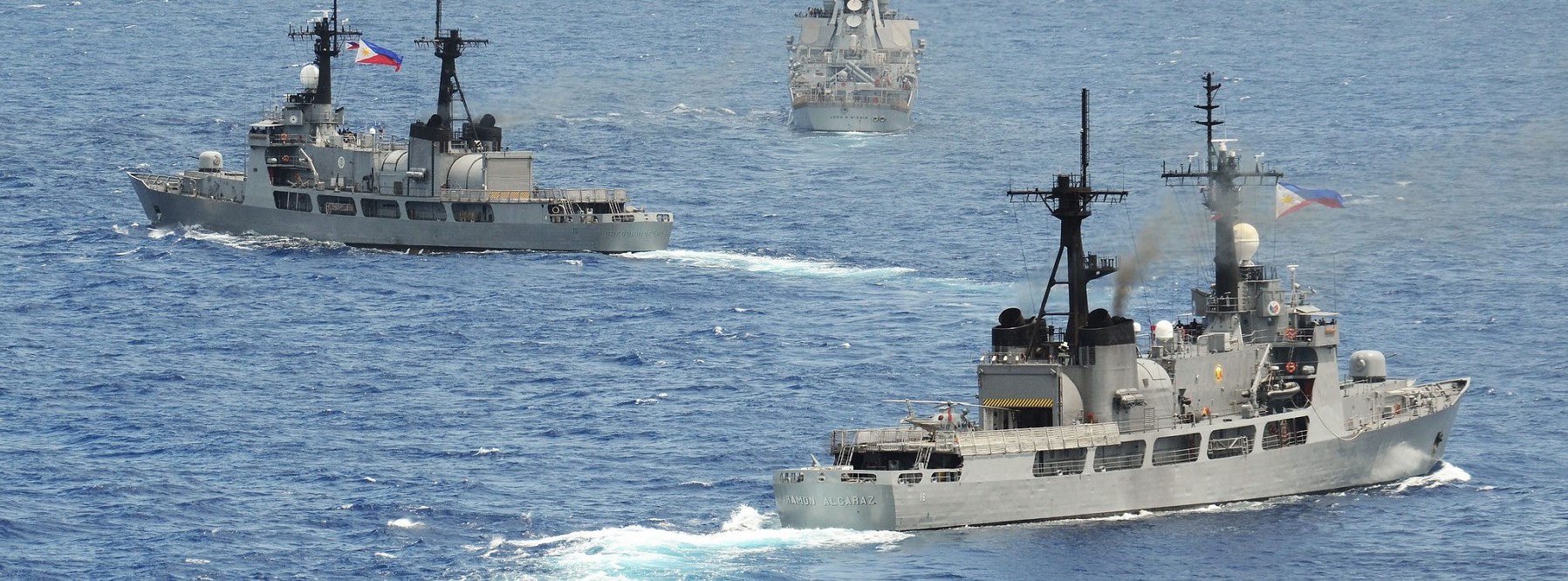President Rodrigo Duterte recently decided to bankroll the second phase of the 15-year Armed Forces of the Philippines (AFP) modernization program. The plan for the program involves three five-year phases, or “horizons.” The first horizon, which began in 2013 and ended in 2017, involved purchases of military hardware mainly for internal security challenges, though it included some big-ticket air and naval acquisitions for external defense. The second horizon, which will be implemented from 2018 to 2022, entails an ambitious transition period wherein the AFP will shift its arms acquisitions away from internal security to territorial defense. This will require a huge allocation of 300 billion pesos (about $5.6 billion).
This substantial financial outlay will enable the Philippine Army to acquire towed and self- propelled howitzers, multiple rocket launch rocket systems, ground mobility vehicles, and even light tanks. The big-ticket items that the AFP will fund, however, will be for the Philippine Navy and Philippine Air Force. The navy will procure two more missile-capable frigates (two are currently being constructed by Hyundai Shipbuilding Corporation and will be delivered in 2020), amphibious assault vehicles, anti-submarine helicopters, multi-role vessels, and submarines.
The acquisition of submarines was originally planned for the third horizon (2023-2028). But the current navy chief, Vice Admiral Robert Empedrad, lobbied for the immediate inclusion of diesel-electric submarines in horizon two. He argued that undersea operations are a trend in naval warfare and its lack of submarines would disadvantage the AFP in any future conflict. The Department of Defense (DND) supported Empedrad, saying that diesel-electric submarines would be a great equalizer in the country’s naval arsenal. The DND declined to provide an exact number of submarines that the navy will buy, but said that it will be more than one. To show it is serious about the project, the navy has formed a Submarine Group that is now sending personnel abroad for training in undersea operations. The navy estimates that its acquisition of submarines, including building the vessels, training officers and crews, and the provision of support facilities will take 7 to 10 years.
The air force’s big-ticket item will be two squadrons of multi-role fighters. Air force planners have yet to detail the exact number of fighters or a specific budget for the acquisition, but the air force is reportedly inclined to buy European-made fighters, possibly the Gripen from Sweden’s Saab. President Duterte also recently approved the acquisition of an additional 12 FA-50 lead-in fighter planes from South Korea to complement the 12 already purchased during the first horizon of the AFP modernization program.
A Build-Up Despite Rapprochement with China
Former President Benigno Aquino originally launched the AFP modernization program as part of an effort to challenge China’s expansion in the South China Sea. But after Duterte’s election in 2016, the new president suggested he would pursue a policy of gravitating closer to China while ignoring territorial defense and focusing again on internal security.
Since late 2016, Duterte has pursued a policy of appeasement toward China by downplaying the disputes in the South China Sea in return for promised Chinese investment in the Philippines. He quickly set aside the July 2016 ruling from a tribunal at the Permanent Court of Arbitration which found in favor of Manila and against many of Beijing’s claims in the South China Sea. Duterte then went to Beijing in October 2016 where he told Chinese President Xi Jinping that his term would be “the springtime of Philippine-China relations” and returned home with $15 billion in investment pledges (which remain largely unrealized).
But despite the rapprochement in Philippines-China relations, Duterte’s decision to finance the second horizon of the AFP modernization program suggests that he will continue the Philippine military’s shift from internal to territorial defense. There seem to be two major reasons for this decision. First, Duterte needs to maintain support from the military, especially as he seeks to shift the country away from its historical reliance on the United States and toward a closer relationship with China driven by economic concessions. He also needs to shore up military support in light of the resilience of domestic security challenges, as shown by the five-month siege of Marawi City by Islamic militants in 2017.
Second, Philippine public opinion remains highly suspicious of Chinese actions in the South China Sea and is critical of the administration’s efforts to improve relations with Beijing. The opposition party and several civil society organizations have castigated the Duterte government for not pushing Beijing to comply with the 2016 arbitral award and failing to denounce recent Chinese escalations in the South China Sea, including the landing of bombers in the Paracel Islands, installation of missile and jamming systems in the Spratlys, and harassment of Filipino fishermen at Scarborough Shoal.
Pressured by public opinion, the Department of Foreign Affairs recently notified China of actions that Manila would consider unacceptable in the South China Sea. These “red lines” include: Chinese construction of a permanent facility at Scarborough Shoal; any attempt to remove the derelict BRP Sierra Madre from Second Thomas Shoal or prevent resupply of the Filipino marines stationed aboard it; and unilateral extraction of oil and gas from the Philippines’ continental shelf. The decision to finance the second horizon is aimed at assuring the Filipino public that the government is developing a credible defense capability that will enable the AFP to respond in case China crosses those red lines.
